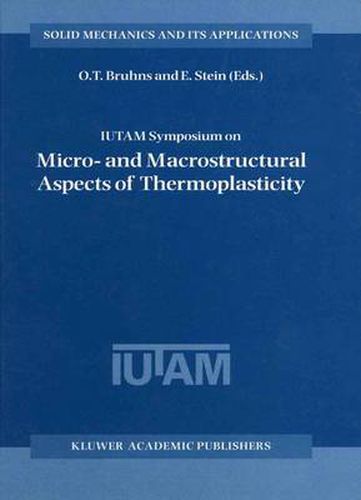Readings Newsletter
Become a Readings Member to make your shopping experience even easier.
Sign in or sign up for free!
You’re not far away from qualifying for FREE standard shipping within Australia
You’ve qualified for FREE standard shipping within Australia
The cart is loading…






This title is printed to order. This book may have been self-published. If so, we cannot guarantee the quality of the content. In the main most books will have gone through the editing process however some may not. We therefore suggest that you be aware of this before ordering this book. If in doubt check either the author or publisher’s details as we are unable to accept any returns unless they are faulty. Please contact us if you have any questions.
During the last decades modelling of inelastic structural behaviour has achieved great attention. Wherever elastic designhas reached its limita sa consequence of increased loading, the related cons titutive rela tions meanwhile have become part of the engineer’s practice. However, new materials with complex behaviour, further increasing loads at higher temperatures, as well as the implementation of stronger security demands have led to theconsequence that the preferentially used phenomenological concepts need to be verified and improved continuously. Caused by the a priori non linear character oft he material rela tions, all equations fort he description of every new phenomenon need to be reconsidered. According to this, since about a decade the idea succeeds that constitutive relations which represent material behaviour more re alistically can not only be deduced phe nomenologicallyfrom the laws of continuum mechanics. Sincet he observed behaviour is caused by processes taking place on the microscale, these processes and mechanisms need to be taken into consideration when determining the constitutive relations. The formulation of proper micro macro relations actu ally is one of the main emphases in thermoplasticity in the international research. The intentiono ft he IUTAM Symposium on ‘Micro and Macrostructural Aspects of Thermoplasticity’, held at the Ruhr University of Bochum, Germany, from August 25 to 29, 1997, wast o bring together eminent scientistsworking i n different fields of thermoplasticity with the aim thatt hey may exchange their ideas and activate this interaction.
$9.00 standard shipping within Australia
FREE standard shipping within Australia for orders over $100.00
Express & International shipping calculated at checkout
This title is printed to order. This book may have been self-published. If so, we cannot guarantee the quality of the content. In the main most books will have gone through the editing process however some may not. We therefore suggest that you be aware of this before ordering this book. If in doubt check either the author or publisher’s details as we are unable to accept any returns unless they are faulty. Please contact us if you have any questions.
During the last decades modelling of inelastic structural behaviour has achieved great attention. Wherever elastic designhas reached its limita sa consequence of increased loading, the related cons titutive rela tions meanwhile have become part of the engineer’s practice. However, new materials with complex behaviour, further increasing loads at higher temperatures, as well as the implementation of stronger security demands have led to theconsequence that the preferentially used phenomenological concepts need to be verified and improved continuously. Caused by the a priori non linear character oft he material rela tions, all equations fort he description of every new phenomenon need to be reconsidered. According to this, since about a decade the idea succeeds that constitutive relations which represent material behaviour more re alistically can not only be deduced phe nomenologicallyfrom the laws of continuum mechanics. Sincet he observed behaviour is caused by processes taking place on the microscale, these processes and mechanisms need to be taken into consideration when determining the constitutive relations. The formulation of proper micro macro relations actu ally is one of the main emphases in thermoplasticity in the international research. The intentiono ft he IUTAM Symposium on ‘Micro and Macrostructural Aspects of Thermoplasticity’, held at the Ruhr University of Bochum, Germany, from August 25 to 29, 1997, wast o bring together eminent scientistsworking i n different fields of thermoplasticity with the aim thatt hey may exchange their ideas and activate this interaction.